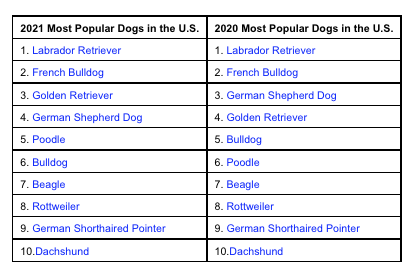Welcome to the Week’s Review of Canine Social Media
Welcome to this Special Feature on the DoggieU K9 Blog for an update on this week’s dog-related social media from around the world. There are so many stories. Here we will share some of the best stories this week.
Enjoy & share them.
Television: It’s not just for people anymore.
These days, programming created specifically for dogs is more frequently popping up on our screens.
- YouTube offers a nearly endless supply of dog-centered videos, and there’s a growing number of television and streaming channels promising 24/7 content to keep pups entertained or even alleviate stress or separation anxiety while owners are away.
- But very little is actually understood about how dogs engage with this kind of programming, and what kind of videos most appeal to them.
Why is this important?
A new citizen-science study led by a University of Wisconsin–Madison professor is asking dog owners to help shed some light on these questions. It’s no trivial business, as the results could lay the groundwork for developing better ways of assessing vision in dogs.
trivial business, as the results could lay the groundwork for developing better ways of assessing vision in dogs.
- “The overarching goal in this study is to figure out what dogs like to watch on television,” says Freya Mowat, a veterinary clinician-scientist. “This is interesting from a dog behavior standpoint, but as dog vision researchers, we also want to develop engaging methods to test dog vision in either the home or clinic, which we currently just do not have.”
- Mowat says previous efforts to develop an eye test for dogs have resulted in more than a few “epic fails.” Trying to adapt human vision tests for dogs has proved challenging, at best, or required too much training to be viable.
- But Mowat believes videos could potentially be the key to holding a dog’s attention long enough to gather and assess critical information about visual function. The trick is determining the type of content that’s most engaging and appealing to dogs.
Study data and goals
- The unique questionnaire asks people to provide information on their dog’s screen-viewing habits, as well as information about the dog’s age, sex, breed, and where they live.
- Participants can also take the optional step of showing their pooch four short videos of subjects potentially of interest to dogs, such as objects and other animals. People will then rate their dog’s interest in each video and how closely the dog tracked the moving objects in the videos.
- “We intend for this to be a fun activity for both dogs and their people,” Mowat says. “And we’d really love to get thousands of responses from individuals across the world, so we can better understand if dogs in Wisconsin like the same kind of videos as dogs in New York or Brazil or any other location.”
- This study could also help answer a question of interest to all dog owners: How do we help our four-legged friends age gracefully?
- “As they get older, do dogs need things like brighter lighting in their environment to prevent them from tripping down the stairs in the middle of the night, or other visual cues to help them locate things? These are questions we genuinely don’t know the answers to,” Mowat says. “We do know that canine retinal function does decline with age and can decline quite significantly. So it’s more than likely that visual perception does change, but what that actually means from a lifestyle standpoint is the missing piece of the puzzle.”
- A future goal, says Mowat, is to compare how a dog’s vision ages compared with the human or humans they share a home with.
- “After all, a dog has a much shorter lifespan than their owner, and so if there are emerging environmental or lifestyle factors that influence visual aging, it might well show up in our dogs decades before it shows up in us,” Mowat explains. “Our dogs could be our sentinels — the canine in the proverbial coal mine.”
If you wish to participate in the University of Wisconsin–Madison School of Veterinary Medicine study, click here. It is confidential and will take 10-20 minutes.
[Link]
Labrador Retriever Continues Its Reign As the Nation’s Favorite Dog
AKC announced at a virtual press conference recently at the AKC Museum of the Dog that the ever-popular Labrador Retriever is the nation’s favorite dog for the 31st consecutive year.

While the lovable Lab remains a constant at the top of the charts, the Poodle has pawed its way back into the top five, bumping the perennial favorite Bulldog out for the first time in almost a decade. The Bulldog has been a fixture among the top five most popular breeds since 2012. This is the first time the Poodle has been back in the top five since 1997.
Here are the lists for the current and previous year.

Other Upcoming Breeds
According to AKC, other movers and shakers in 2021 include the Flat-Coated Retriever, which jumped 10 spots year over year (#103 in 2020 and #93 in 2021). Making a comeback over the past decade are Cane Corso (#68 in 2011 and #21 in 2021), Wirehaired Pointing Griffons (#93 in 2011 and #60 in 2021), Giant Schnauzers (#96 in 2011 and #65 in 2021), Xoloitzcuintli (#156 in 2011 and #119 in 2021), Beaucerons (#145 in 2011 and #121 in 2021) and Sealyham Terriers (#164 in 2011 and #139 in 2021).
[AKC]
This is Kiara, the Volleydog
Watch this amazing Black Labrador Retriever play volleyball.
Here is a link to Kiara’s Instagram page. [Link]
